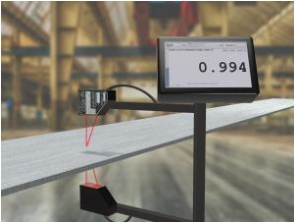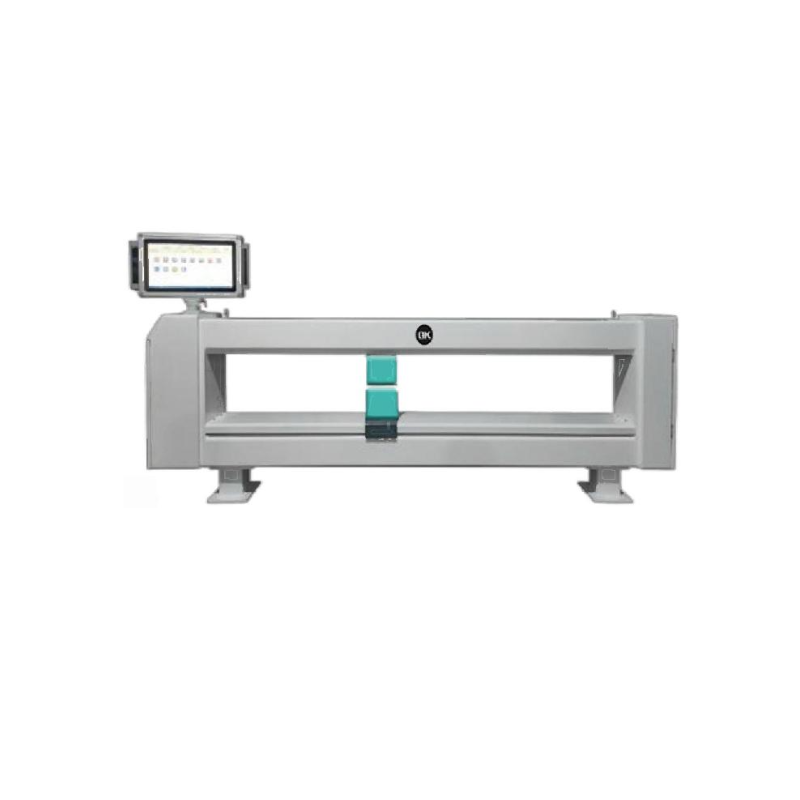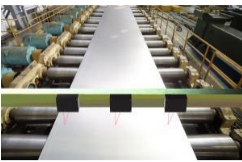The Crucial Role of In-line Thickness Measurement Systems in Quality Control
Whether producing intricate electronic components, sturdy construction materials, or delicate medical devices, maintaining uniform thickness is crucial for product performance and reliability. One crucial aspect of quality control is ensuring the thickness of materials meets specified standards. This is where in-line thickness measurement systems play a pivotal role.

Understanding In-line Thickness Measurement Systems
An in-line thickness measurement system is a sophisticated technology designed to measure the thickness of materials accurately and rapidly during the manufacturing process. Unlike traditional off-line methods, where samples are taken for measurement in a separate environment, in-line systems perform measurements directly within the production line, providing real-time feedback.

How Do In-line Thickness Measurement Systems Work
In-line thickness measurement systems are sophisticated instruments designed to measure the thickness of materials directly within the production line. These systems utilize various techniques and technologies to achieve precise measurements.
1. Integration into the Production Line
In-line thickness measurement systems are seamlessly integrated into the manufacturing process, typically positioned at strategic points along the production line where thickness measurements are required. They can be incorporated into existing equipment or installed as standalone units, depending on the specific application and requirements.
2. Sensor Technology
The heart of an in-line thickness measurement system lies in its sensors or probes. These sensors come in different forms, such as laser, ultrasound, x-ray, electromagnetic, or optical sensors, each tailored to suit specific materials and applications. The choice of sensor depends on factors like material properties, thickness range, and environmental conditions.
3. Measurement Principle
The sensors emit signals or waves towards the material being measured and capture the response to determine its thickness. The exact measurement principle varies depending on the type of sensor used:
- Laser Sensors: Emit a laser beam onto the material surface and measure the time it takes for the beam to reflect back. By calculating the round-trip time and knowing the speed of light, the thickness of the material can be determined.
- Ultrasound Sensors: Send high-frequency sound waves through the material and measure the time it takes for the waves to bounce back. The thickness is determined based on the speed of sound in the material.
- X-ray Sensors: Emit x-ray radiation through the material and measure the attenuation or absorption of the radiation. Thicker materials absorb more radiation, resulting in lower intensity readings.
- Electromagnetic Sensors: Generate an electromagnetic field around the material and measure changes in the field caused by variations in thickness. Thicker materials induce greater changes in the field strength.
- Optical Sensors: Utilize light refraction or interference patterns to determine thickness variations in transparent or translucent materials.
4. Data Processing and Analysis
The measurements captured by the sensors are then processed and analyzed by dedicated software or algorithms. This software interprets the raw data, compensates for environmental factors (such as temperature or humidity), and calculates the precise thickness of the material. Advanced algorithms may also perform statistical analysis or pattern recognition to identify trends, deviations, or defects in the measured thickness.
5. Feedback and Control
Based on the analyzed data, the in-line thickness measurement system provides real-time feedback to operators or automated control systems. If the measured thickness deviates from the specified tolerances, corrective actions can be initiated to adjust manufacturing parameters, such as material flow rate, pressure, temperature, or machine settings, to bring the thickness back within acceptable limits.
Key Benefits of In-line Thickness Measurement Systems
| Key Benefits | Description |
| Improved Quality Control | Ensures consistent product quality by detecting variations in thickness during the manufacturing process. |
| Real-time Monitoring | Provides real-time feedback on product thickness, allowing for immediate adjustments and corrections. |
| Reduced Material Waste | Minimizes material waste by identifying and correcting thickness deviations early in the production process. |
| Increased Production Efficiency | Optimizes production efficiency by minimizing downtime and scrap, resulting in higher throughput. |
| Enhanced Process Optimization | Enables process optimization based on accurate thickness data, leading to improved overall performance. |
| Compliance with Standards and Regulations | Helps meet industry standards and regulatory requirements by ensuring product thickness meets specifications. |
Applications Across Industries of In-line Thickness Measurement Systems
In-line thickness measurement systems find diverse applications across a wide range of industries, where precise control of material thickness is critical for product quality, performance, and regulatory compliance.
1. Automotive Industry
- Sheet Metal Production: In-line thickness measurement systems ensure uniform thickness in automotive body panels, chassis components, and structural parts, ensuring optimal strength, durability, and safety.
- Coating Thickness Control: These systems monitor the thickness of paint, primer, and protective coatings applied to automotive surfaces, ensuring consistent coverage and adherence to quality standards.
2. Aerospace Industry
- Composite Material Manufacturing: In-line measurement systems monitor the thickness of composite materials used in aircraft structures, such as fuselages, wings, and interior components, ensuring compliance with stringent aerospace standards and specifications.
- Metal Alloys Production: For aircraft engine components and structural parts, in-line thickness measurement systems ensure precise control of metal alloy thickness during manufacturing processes like forging, machining, and heat treatment.
3. Electronics Industry
- Semiconductor Wafer Production: In-line thickness measurement systems monitor the thickness of semiconductor wafers during fabrication processes such as polishing, etching, and deposition, ensuring uniformity and consistency for optimal electronic performance.
- Printed Circuit Board (PCB) Manufacturing: These systems measure the thickness of copper layers, solder masks, and dielectric materials in PCB production, ensuring adherence to design specifications and reliable electrical performance.
4. Packaging Industry
- Film and Foil Production: In-line measurement systems monitor the thickness of packaging films, foils, and laminates used in food packaging, pharmaceutical blister packs, and flexible pouches, ensuring barrier properties and product integrity.
- Paperboard and Cardboard Manufacturing: These systems control the thickness of paperboard and cardboard substrates used in packaging boxes, cartons, and containers, ensuring dimensional stability and structural strength.
5. Construction Industry
- Concrete and Asphalt Production: In-line thickness measurement systems monitor the thickness of concrete slabs, asphalt pavements, and road surfaces during production, ensuring uniformity, strength, and durability for infrastructure projects.
- Insulation Material Manufacturing: These systems measure the thickness of thermal and acoustic insulation materials used in buildings and construction applications, ensuring energy efficiency and soundproofing performance.
6. Medical Device Industry
- Catheter and Tubing Manufacturing: In-line thickness measurement systems monitor the thickness of medical-grade polymers and elastomers used in catheters, tubing, and implantable devices, ensuring precise dimensions and biocompatibility.
- Packaging for Pharmaceuticals: These systems measure the thickness of packaging materials for pharmaceutical products, such as blister packs, vials, and pouches, ensuring compliance with regulatory requirements for product protection and stability.

Challenges and Future Solutions in In-line Thickness Measurement Systems
While in-line thickness measurement systems offer significant advantages, they also face several challenges that impact their effectiveness and reliability. Addressing these challenges requires continuous innovation and the development of solutions.
1. Calibration Drift
Over time, sensors used in in-line measurement systems may experience calibration drift, leading to inaccuracies in thickness measurements. This can result from factors such as sensor degradation, environmental changes, or wear and tear.
Future Solution: Implementing self-calibration mechanisms or using advanced sensor technologies with built-in calibration monitoring capabilities can help mitigate calibration drift. Additionally, regular maintenance and recalibration schedules can ensure the continued accuracy of measurement systems.
2. Material Variability
Different materials exhibit varying properties and behaviors, making it challenging to develop universal measurement techniques that apply across all materials. Factors such as material composition, surface finish, and opacity can affect measurement accuracy.
Future Solution: Advancements in sensor technology, including multi-sensor fusion and adaptive algorithms, can enable in-line measurement systems to adapt to different material properties and optimize measurement techniques accordingly. Machine learning and artificial intelligence algorithms can also be employed to enhance measurement accuracy by learning from historical data and adjusting measurement parameters in real-time.
3. High-Speed Production Environments
In-line measurement systems must operate effectively in high-speed production environments where materials move rapidly through the production line. Achieving accurate measurements within short timeframes presents technical challenges related to sensor response time and data processing speed.
Future Solution: Developments in sensor technology, such as high-speed laser scanners and ultra-fast signal processing algorithms, can enable in-line measurement systems to keep pace with high-speed production lines while maintaining measurement accuracy. Integration with advanced control systems and real-time data analytics platforms can further enhance system responsiveness and performance.
4. Complex Geometries and Surfaces
Some manufacturing processes involve materials with complex geometries or irregular surfaces, making it difficult to obtain accurate thickness measurements using traditional techniques. Surface curvature, texture, and reflectivity can pose challenges for measurement systems.
Future Solution: Advancements in sensor design, such as the development of flexible and adaptable sensor arrays, can enable in-line measurement systems to accommodate complex geometries and surface profiles. Incorporating advanced imaging techniques, such as structured light or depth sensing, can improve measurement accuracy on non-planar surfaces.
5. Integration with Industry 4.0 Technologies
In-line thickness measurement systems are increasingly being integrated into Industry 4.0 ecosystems, where they interact with other smart manufacturing technologies such as IoT devices, cloud computing, and cyber-physical systems. Ensuring seamless interoperability and data exchange between different systems poses integration challenges.
Future Solution: Standardization efforts and interoperability protocols, such as OPC UA (Open Platform Communications Unified Architecture), can facilitate seamless integration of in-line measurement systems with other Industry 4.0 technologies. Developing standardized interfaces and communication protocols will enable plug-and-play compatibility between different systems, fostering interoperability and data exchange.
Conclusion
In-line thickness measurement systems represent a critical advancement in quality control technology, enabling manufacturers to achieve higher levels of precision, efficiency, and consistency in their production processes. As industries continue to evolve, the widespread adoption of these systems is poised to catalyze further innovation, driving quality improvement and bolstering competitiveness across sectors.


